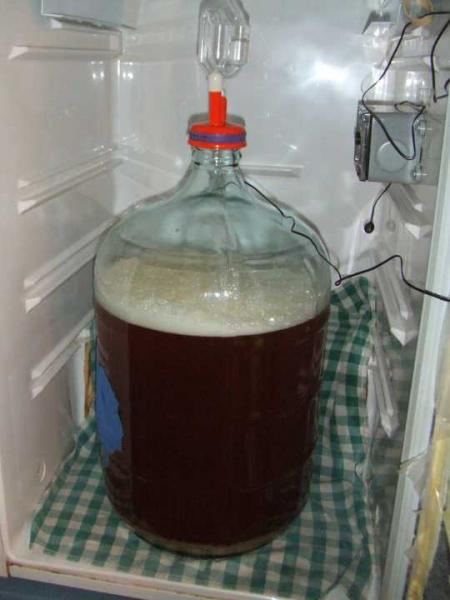motobrewer
I'm no atheist scientist, but...
Anyone use it? anyone have any recommendations for ferm temps?

Not yet, but I ordered some on a whim during the Brewmasters Warehouse Cyber Monday sale. My wife’s a fan of English Bitter, so I thought I’d give it a try, but have no recipe. I'd also be interested in reading anyone else’s plans.Anyone use it?
Wyeast 1469 PC West Yorkshire Ale
This strain produces ales with a full chewy malt flavor and character, but finishes dry, producing famously balanced beers. Expect moderate nutty and stone-fruit esters. Best used for the production of cask-conditioned bitters, ESB and mild ales. Reliably flocculent, producing bright beer without filtration.
Attenuation 67-71%
Alc. Tolerance 9%
Flocculation high
Temperature Range 64-72°F (18-22°C)
This sounds interesting, but there's no mention of optimum temperature ranges to promote it.Expect moderate nutty and stone-fruit esters.
I put it in the same category as the Wyeast Kolsch and Saison strains, yeast that make great beers but are a pain to work with. I did a Landlord inspired beer with it when it first came out a few years ago, the krausen never dropped and it took a couple months in the fridge to drop bright in the bottles.
Have people had better experiences with its flocculation since it was re-released?
I put it in the same category as the Wyeast Kolsch and Saison strains, yeast that make great beers but are a pain to work with. I did a Landlord inspired beer with it when it first came out a few years ago, the krausen never dropped and it took a couple months in the fridge to drop bright in the bottles.
Have people had better experiences with its flocculation since it was re-released?
I have mixed success with this yeast in terms of flocculation. Sometimes it ferments fast and drops clear within three days (lighter colored bitters, esbs) and is ready to drink in two weeks. Other times it doesn't flocculate at all and I have to wait months for it to clear. Actually, I just added gelatine last night to a batch wy1469 brown ale that was refusing to clear.
In terms of flavor, I think this is about as good as English strains get!
I was looking forward to brewing over the weekend, but had to work. Finished the job up Monday, so took yesterday off and brewed. There’s eight gallons of wort down in the basement, but the excitement won’t end until there’s beer to drink. High hopes for this yeast!i'm excited to use this as well . . .

I'm about to make an ESB with this yeast, and I think i'll ferment it in my 60-65 degree cellar. Judging by what you guys are saying, this should be adequate.
One thing i'm curious about is the attenuation of this strain, since it's lower than any other yeast I've used. Obviously, this will be good for this style, but has anyone had any cloying sweetness? Beersmith says my FG should be about 1.014, which isn't too high, but has me concerned.
Another update.
I spoke too soon. Woke up this morning to a foamy airlock. Nothing to serious, just a PITA. It's falling back already. Strangely it was the carboy that was kept at a slightly cooler temperature. It did have about a quart more wort than the other, so that may have been just enough to make the difference. Even the other had krausen right up to the rim. Just seems odd that they both took off fast, but then regrouped for another spurt of growth after more than 48 hours.
Any explanations?
From what I've read, 1469 is a true top cropper. You get a first krausen like in pretty much 99% of your beers, it might drop a little, and then a big portion of the yeast starts accumulating on the surface, creating a foamy "second" krausen.
You can harvest the yeast from the top by scooping the foam and adding some sterile water to a sterile mason jar. I bought some of it along with London Ale III precisely because they were top croppers and it makes open fermentation along with yeast harvesting so much easier.
Should I be worried about infection removing the airlock so often? I've never done a blowoff hose, and i feel like at this point i should just ride it out... what do you guys think?
Enter your email address to join: